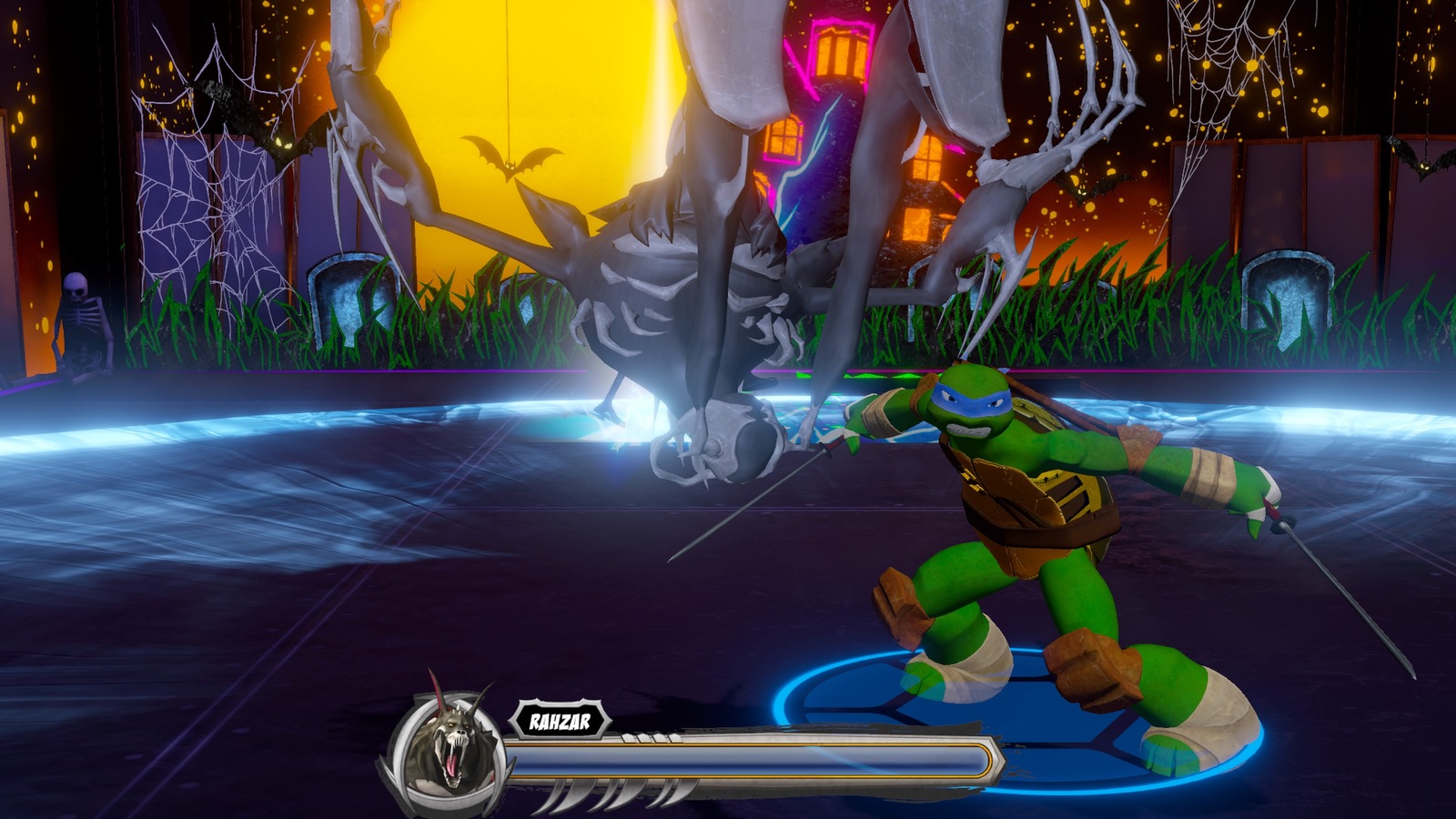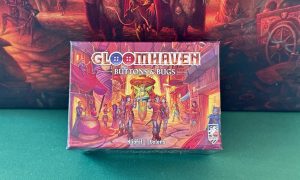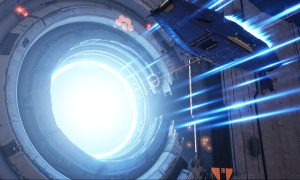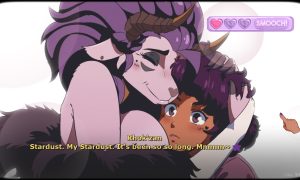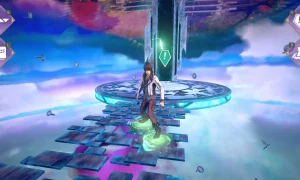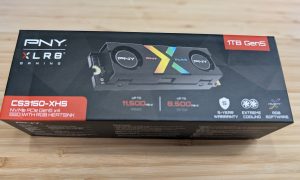As their title implies, mutation is vital to the Teenage Mutant Ninja Turtles’ existence. Every few years the TMNT resurface and evolve into some new incarnation. When it comes to video games, however, they consistently revisit the form of the arcade beat-em-up. Teenage Mutant Ninja Turtles Arcade: Wrath of the Mutants takes another crack at the turtles’ favorite stomping grounds, mutating the familiar beat-em-up formula into something different…something strange. For the first time, this 2017 arcade game comes home with a new release on all major gaming platforms. I appreciate the idea of making this curiosity more widely playable, but unfortunately its mutation of the genre won’t keep you surfing through its sewers for long.
If you know the Turtles, you already know what this game is all about. After making a simple choice of turtle, you generally move from the left side of the screen to the right. During your trip, you mash buttons to beat up ninjas and anything else in your way. Eventually you’ll meet a boss that will kill you a few times and rob you of your quarters, either literally or psychologically. Crying is optional. Rinse with sewer water and repeat. It’s a tried-and-true formula and one that on the surface looks simple enough to get right. Beat-em-ups may follow a straightforward template, but the best ones, including the best TMNT ones, execute on that initial blueprint with nuance and finesse that may not be apparent to the untrained eye.
While you can technically “just” mash buttons and have a decent time in a beat-em-up, there’s more going on beneath the surface if you’re willing to engage with it. Most beat-em-ups tend to be two-dimensional, so while you may be able to move up and down, they boil down to lining yourself up with enemies horizontally. To defeat enemies, you need to get close to them, which also puts you in their range of attack. Concepts of positioning, timing, risk, and reward elevate a simple premise into one where you’re constantly making decisions about where you move, when you attack, and which enemies to prioritize. By keeping these principles in mind, the genre transforms from “button masher” to an engaging game of strategy and reaction.
Wrath of the Mutants strays from these principles by being a fully 3D beat-em-up that allows its characters to move, face, and attack in any direction. An extra third dimension should add more complexity to the gameplay, but in practice it often does the exact opposite. More options means more chances to make mistakes. In addition, 3D environments, models, and animations often struggle to adapt the snappiness and clear readability of their 2D counterparts. Put simply, 3D beat-em-ups tend to be far more imprecise, and by extension, frustrating. It doesn’t have to be this way, but it often is. Developers need to accommodate this fundamental shift in design somehow, and they often compensate by de-emphasizing precision.
Not only does Wrath of the Mutants accommodate its lack of precision, it practically embraces it in how it handles its core fighting mechanics. Within moments of starting the game and beating down a few ninjas, the whole experience feels off. All of the characters move lethargically. The recovery period between when you attack and when you regain control of your character lasts just a little too long, often preventing you from escaping enemy attacks in ways that seem unfair. Most importantly, I wasn’t always hitting the enemy that I was aiming for. There appears to be some strange kind of “auto aim” to your attacks, where your turtle will essentially lock onto whatever enemy happens to be closest to you.
This lock-on quirk creates scenarios that essentially kill the strategy and reaction components to the gameplay. For example, Wrath of the Mutants occasionally throws laser gun-wielding blue ninjas at you. I hate these guys; if you don’t take them out immediately, they’ll shoot out a giant beam that lingers on the screen for so long that you’re virtually guaranteed to be hit. No attempt to dodge or an invincibility window from grabbing other enemies will be able to save you. However, if you happen to be on the opposite side of the screen when they show themselves, you’ll almost certainly be unable to make it to them in time. In a good beat-em-up you could use dash moves or a jump kick to fly across the screen and get to them before they fire off a blast. Here, your jump kick will accidentally glue you to the wrong target, giving the blue ninja ample opportunity for a free shot.
I began to notice a disturbing trend. To effectively combat these more unfair scenarios, you basically need to memorize which enemies will appear and when. That knowledge takes multiple runs through the game to drill into your head, but I struggle to say it’s worth the effort. It doesn’t actually matter that much how “good” or “bad” you are at the game; the difference is minor at best. The game seems to almost expect you to to get hit during specific points in each level.
The magnetized attacks are just one cog in an all-encompassing, almost “automated” design sense. More proof is littered throughout the game. Literally littered! Each stage in Wrath of the Mutants tosses out various items for you to collect from the ground and use on your enemies: shells that temporarily transform you into a spinning death machine, smoke bombs that incapacitate everything on screen, summoning allies like Leatherhead to clear the screen, and so on. In a good beat-em-up, items like these further feed into a sense of timing and strategy. They often need to be used with some skill or awareness of the situation to be effective: do you use them right away, wait until a stronger enemy shows up, or risk using them at all? Not quite the case here – you may as well grab them immediately.
In Wrath of the Mutants, power-ups add spectacle and that’s about it. There may be several kinds of power-ups, but they all do essentially the same thing: clear out the enemies on-screen. They are glorified cutscenes. This becomes especially obvious if you go “off-script” and defeat a few enemies before picking them up. The game will deem the remaining enemy count inadequate for spectacle and summon in more to make their destruction appropriately satisfying. For the power-ups that require you to manually wipe the screen of enemies, like the one that makes your turtle spin around, using one creates replacement enemies that effectively invalidate the ones you already defeated. It simply isn’t worth it to try to use these things strategically.
Boss fights also highlight the futility of trying to play well. All of the classic TMNT bad guys like Bebop, Rocksteady, Baxter Stockman, and Krang appear to slap the turtles around. However, at the same time, they kind of don’t because each fight feels like you’re fighting the same guy over and over. Yeah, they technically do different attacks or favor standing around different parts of the screen, but in the end the best approach to all of them involves running up to them and spamming attacks until they swipe you away. A few rounds of such brilliant tactics will bring even Shredder to his knees.
Ideally, it shouldn’t be this way. That’s how you fight bosses when you don’t know what you’re doing in a beat-em-up. The problem here lies in the fact that it not only seems virtually impossible to avoid taking at least a few hits per battle, but that it’s seriously not worth the effort to even try. I did try despite my better judgment. You don’t have any real defensive options other than trying to move out of the way of the boss’s attacks after landing a hit. Unfortunately, the turtles move far too slowly to get out of range of many boss attacks. My first instinct was to try to jump kick away like you can do in other TMNT games…with “lock-on” quirk to the controls, you can probably guess how that went.
Trying to play cautiously ultimately just opens you up for more chances to get hit while losing out on opportunities to whittle down the boss’s health bar. Every boss summons regular enemies to help them fight, and these guys create awkward windows of opportunity for the boss to hit you while your turtle is stuck in their recovery state from dealing with the fodder. I do not believe for a second that these bosses were designed with the idea that someone could realistically become skilled enough to defeat them unscathed once in a blue moon, let alone consistently. No, instead the game expects you to die at least once or twice during these battles. Throwing yourself at them in a barrage of attacks ends up being the most economical approach by far if only to minimize the damage.
If I’m fundamentally misunderstanding the game or missing some hidden depth, the game never makes it clear how. I cleared it multiple times on each difficulty, at least three times on the hard mode, with this understanding of the game. Wrath of the Mutants never punished me for grabbing the power-ups immediately or blindly beating on the bosses. In fact, I got the top score on most stages with this strategy.
As I played and replayed each stage, it became increasingly obvious that the game expects your run to proceed according to a specific plan and pace. The gun enemies are supposed to get a cheap hit in. The power-ups are supposed to be used as soon as possible. The bosses need to take at least a life or two from you. A slight hint of mechanical depth sneaks in with the ability to use sweep attacks or special screen clearing attacks tied to a meter, yet even these do little to shake things up. These techniques simply provide room to play a little better or a little worse than usual. The difference amounts to potentially an extra life intact by the end or a difference in score.
I see two competing considerations clashing here and the result isn’t pretty. On one hand, the developers clearly wanted to make a simple game that anyone could play. On the other hand, this game was originally designed to abscond with an acceptable amount of money from its players and it isn’t shy about making that obvious. Arcade games may have garnered a reputation for the latter, but deep down most could be mastered and cleared within a single credit for those who enjoyed the fundamental game mechanics enough to try. Between the sluggish movement, attack recovery that overstays its welcome, and the automated feel of Wrath of the Mutants, it hardly feels worth the effort.
Of course, context matters here. This is an arcade game designed and released long after the arcade’s heyday. A game like this exists less for a hardcore player base and more to catch some random passerby’s eye, make them think “hey I remember the Ninja Turtles”, and feed the machine a few dollars. That person probably won’t be thinking about how automated and strange the game feels to play. They’ll be thinking “I like Turtles and I remember playing games like this” while having a decent time for 15-20 minutes. Every time I’ve seen this game out in the wild, it’s been at kids’ restaurants, “barcades”, or at my State Fair, and I think the appeal of playing this game begins and ends at places like those. While I don’t see that as an excuse for releasing a mediocre or poorly designed game, I do understand that there is an inherent appeal here that transcends needing genuinely good design to back up the concept.
In other words, arcade beat-em-ups have secondary value in that they can be the video game equivalent of themed roller coaster rides through your favorite settings. From that perspective, Wrath of the Mutants gets the job done. This game adopts the world and aesthetic of the 2012 TMNT cartoon, and it does a nice job of it. The characters and environments look the part and it even brings over the voice actors from the show. It genuinely caught me off guard to hear Gilbert Gottfried start yelling at me as Krang. This incarnation was never my favorite TMNT, but there are some cool designs (love this version of Rahzar!) and it’s nice to see a significant run of TMNT history encapsulated in such an iconic format. It’s not a perfect presentation – the sound and music design in particular are weak and let the experience down (a classic Konami production this is not) but much like the game design in general, it’s serviceable enough.
Overall, I’m happy that this strange curiosity of a game got a wider release, it just feels like a missed opportunity to refine the experience. This new version of Wrath of the Mutants expands the original game with additional levels and bosses. I admire the ambition, but I can’t help thinking that the effort was misplaced. I would have preferred that more time went into adjusting the underlying game mechanics into something more compelling to play and replay. Disabling the “lock on” effect would be a good start! As is, Wrath of the Mutants offers a fun roller coaster ride that you can enjoy once or twice with friends and that’s about it.
Jack's background is in law, but he's been writing about games since long before that. He aims to capture a game's essence in (hopefully) new and interesting ways with his writing. Occasionally he will even make his articles fun to read. Results vary on that. Talk to him about Mega Man! Preferably not in the third person!

TMNT: Wrath of the Mutants puts you on a roller coaster ride through the world of the 2012 cartoon. The ride proves amusing, but digging any deeper into its game design reveals the game to be a rather sloppy bout of sewer surfin’.
PROS
- Amusement ride-esque appeal
- Solid representation the 2012 TMNT universe
CONS
- Imprecise, automated combat
- Uninteresting game design
- You can’t hit the sewer grates back at the ninjas, what the heck???
See below for our list of partners and affiliates:
